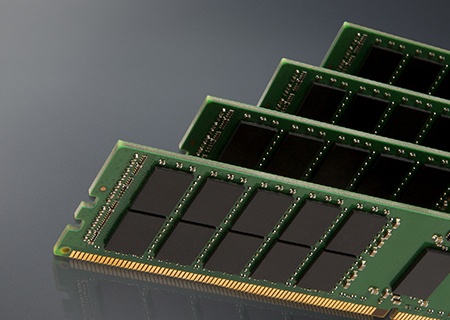Ask an Expert
Planning the right solution requires an understanding of your project and system requirements. Let Kingston's experts guide you.
Ask an Expert

Rafael has spent his career in senior Technology Product, Marketing Communications, and Business Development roles. His advisory practice focuses on the new organizational, product, and communications challenges of technological and regulatory changes, with a central aim of building and preserving revenue streams.
This highly diverse work involves subject matter expertise on information governance and compliance by design, data privacy, and emerging technologies such as AdTech, mobile & 5G, artificial intelligence, and machine learning.
If you understood that as a technical question, then maybe these terms might be considered interchangeable. Certainly, they overlap. However, thinking about them in a broader sense, perhaps as the difference between looking at an old family photo album (memory) versus browsing the contents of an office filing cabinet (storage), then they diverge in meaning quite radically.
The photo album might provoke all sorts of feelings, whereas a filing cabinet will almost certainly not-presuming the reader has not become prone to weepy nostalgia about office furniture in the remote working age of the early 2020s!
Memory in this sense is about experience and emotion, whereas storage is, by comparison merely the keeping of records. Both are important of course.

The growing distinction between storage and server memory goes a long way to explain how our experience of technology has changed so radically since computing came into its own in the 1980s. I’ve written before about those earlier times, and one of the things that is so remarkable is how much you could get out of just 16 KB of memory, in the case of my ZX Spectrum. When I expanded that with a flimsy, clunky 32 KB memory pack, it opened up way more fun, greater depth, and richer experiences than it had any right to.
Even then, memory wasn’t about storage in and of itself; it was about new possibilities. Memory enabled a computer’s CPU to take on the task of world-building. Graphics became vibrant, in that 1980s way we love still today; environments became more varied and characterful, and it wasn’t solely to do with processor power. If it wasn’t for the growing ability of memory to move large chunks of data around at ever higher speeds, the processor would be unable to deploy its full range of capabilities.
Kingston are not merely providers of storage. #KingstonIsWithYou is a message of empowerment for us as individuals: whatever we choose to do with our technology, memory is the key to getting more out of it. They understand that evolving technology has the power to change the way we live every day. There have been so many advances in memory technology, such as chip density transition from 8Gbit to 16Gbit, increases in capacity now available up to 64GB, and speed capabilities up to 3200Mhz. Storage has also seen advances in technology from SATA to NVMe and PCIe Gen3 to PCIe Gen4, which will be twice as fast as its predecessor.
This is most true of the digitization of media, culture, and the arts: a major revolution that has taken place in only a few years. I have a plastic crate full of VHS tapes in my attic that attest to the death of physical media. There are many factors that have led to today’s consumption model for music, movies, and other digital products such as computer games, which surely at this point must be accepted as a major emerging form of artistic expression.

When I first purchased a digital camera in around 2002, its removable memory card (no cloud uploads) could fit around 90–100 photos at a mighty 3.2 megapixels. This meant that while it was a massive leap up from a roll of Kodak film, I still had to think a bit about whether it was worth pressing the shutter. Today of course, 4K video at 120 frames per second can be captured with a mid-range mobile phone, with no need for a separate camera. The processor has a lot to do with it, as does software, but it is memory chips that do the other bits of heavy lifting.
As we moved from 8-bit chipsets to today’s common use of 64-bit architecture, Kingston’s advances in memory and storage manufacturing have kept pace with this terrific cycle of growth. Thinking about the next phase in our technological growth, it seems clear that Artificial Intelligence will be one of the major engines, bringing analytical and predictive abilities to everyday technology.
JJust as integrated circuits have been optimized for specific purposes such as PC CPUs, dedicated graphics cards, or controllers for industrial machinery, achieving high performance in the sphere of Artificial Intelligence requires high-performance memory and storage. Kingston is already at the forefront of memory and storage for the requirements of Artificial Intelligence (AI), machine learning, and IoT.
And what of storage, which might be in danger of being considered unglamorous by comparison? As with memory, there has been a major shift in the understanding of what storage really means, towards thinking of data as an asset, as well as a liability. The new wave of data-related legislation, from the GDPR to the California Consumer Protection Act and others, means that most organizations need a new strategy around the various data lifecycles and related processes. Storage is not the passive receptacle for data that it once was—we now need storage to be secure, replicated, encrypted, and organized.
The early 2020s was a time of seemingly unending crisis for many around the world. However, let us consider how much we are helped by technology when it comes to making the best efforts, we can be meaningfully closer to each other, both in business and within our communities and families.
For more than 30 years, Kingston has been integral to the IT backbone of companies. Kingston continues to invest millions in the development and testing of its memory and storage products to support future technology to enable AI, IoT, and TechforGood initiatives.
#KingstonIsWithYou

Planning the right solution requires an understanding of your project and system requirements. Let Kingston's experts guide you.
Ask an Expert
When you start with Kingston, choosing memory is easy.
With over 35 years of expertise, Kingston has the knowledge and resources you need to choose memory with confidence.
Simply enter the make and model number or system part number of the computer system or digital device to find the Kingston products you need.
Search by either the Kingston part number, distributor part number or manufacturer equivalent part number.